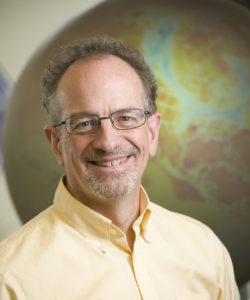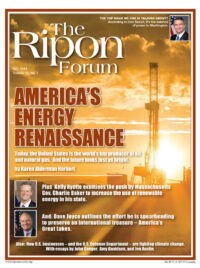
The self-correcting nature of the scientific method has enabled centuries of discovery and economic development, leading to dramatic improvements in the quality of human life since 1500. Hypotheses are evaluated against observations to develop a coherent description of the world which is consistent with measurements and (more importantly) provides reliable predictive skill to guide rational decisions.
One of the very most successful examples is the scientific framework of thermodynamics, which describes and predicts the conservation, transformation, storage, and transport of energy. Thermodynamics is the basis for a huge range of industrial and economic processes, as well as for our understanding that changes in global climate require changes in planetary energy balances.
Weather involves local or regional redistribution of energy by fluid motions (wind and ocean currents) or transformations such as the latent heat of condensation of water vapor, but global climate change requires sustained imbalance in energy fluxes into and out of the planet as a whole. Because the Earth’s atmosphere is held in place by gravity and surrounded by the vacuum of space, conduction and convection are negligible as planetary sources and sinks of energy relative to electromagnetic exchanges that are many orders of magnitude greater.
When more energy is added by solar radiation than is lost to thermal emission, the Earth’s climate warms and vice versa.
The only significant input of energy to the Earth’s climate system is sunlight, and the only significant output is thermal radiation from the planet into space. When more energy is added by solar radiation than is lost to thermal emission, the Earth’s climate warms and vice versa. Heat in minus heat out equals change in heat, which is proportional to change in temperature. Every climate change inferred from the geologic record is explained by this simple statement of the conservation of energy. The same principle explains and predicts precisely how much warmer is day than night, summer than winter, Miami than Minneapolis, and a pot of water after a burner has been lit underneath.
For nearly 200 years, the science of thermodynamics has been used to quantify the effect of the absorption of thermal radiation by Earth’s atmosphere and the resulting attenuation of “heat out” at a planetary scale. The dependence of atmospheric absorption on carbon dioxide and water vapor was first measured in the laboratory around 1860, and in the subsequent 158 years, these measurements have been repeated thousands of times with increasingly precise instruments. Laboratory spectrometry of CO2 and H2O is now resolved to sub-picometer precision, and the shape of every absorption line is explained in terms of molecular, atomic, and quantum effects.
Over the past 50 years, the absorption and emission of radiation by CO2 and other gases has been measured from towers, balloons, aircraft, and satellites. In every case the measurements are completely consistent with our overall understanding of the effect of changes in CO2 on “heat out,” and therefore on the energy balance of the Earth’s climate system. We know with extraordinary precision by how many Watts the incoming sunlight is out of balance with the outgoing thermal radiation of our planet, and we can account for the resulting change in stored Joules in the oceans, atmosphere, soils, snow, and ice. We have measured these changes in stored heat using tens of thousands of in-situ sensors and millions of satellite retrievals each day. The results of these measurements are successfully predicted with the same thermodynamic equations that allow us to design factories and power plants and automobiles, enabling our global industrial economy. This is one of the great triumphs of modernity, distinguishing us from the superstitions of our medieval ancestors.
It is incumbent on those who dispute these calculations to explain by what physical mechanism they draw their conclusions.
There are those who claim that adding an easily measured amount of heat to the planet by increasing the absorption of outgoing thermal radiation will not warm the climate, or who claim that the sensitivity to radiation imbalance is less for photons absorbed by CO2 than it is for photons emitted by the Sun. We should be highly skeptical of such claims, as required by the scientific method.
Without strong policy, economic development in China, India, and Africa will be powered by burning almost 10 times the total fossil fuels consumed up to now, raising atmospheric CO2 to more than four times its preindustrial concentration. Application of straightforward thermodynamics shows that the resulting imbalance of radiation would be as great as the difference between the last Ice Age and today, but that it would occur more than 50 times as fast.
It is incumbent on those who dispute these calculations to explain by what physical mechanism they draw their conclusions. The scientific method requires that such claims must be made in the form of falsifiable hypotheses which can then be tested using experimental methods. In the absence of any coherent and rigorous alternative, cost-benefit analysis requires rational policy to avoid catastrophically expensive damages.
Scott Denning, Ph.D., is Monfort Professor of Atmospheric Science at Colorado State University, where he leads a large research group using many kinds of observations and models to understand the metabolism of the Earth’s biosphere.




